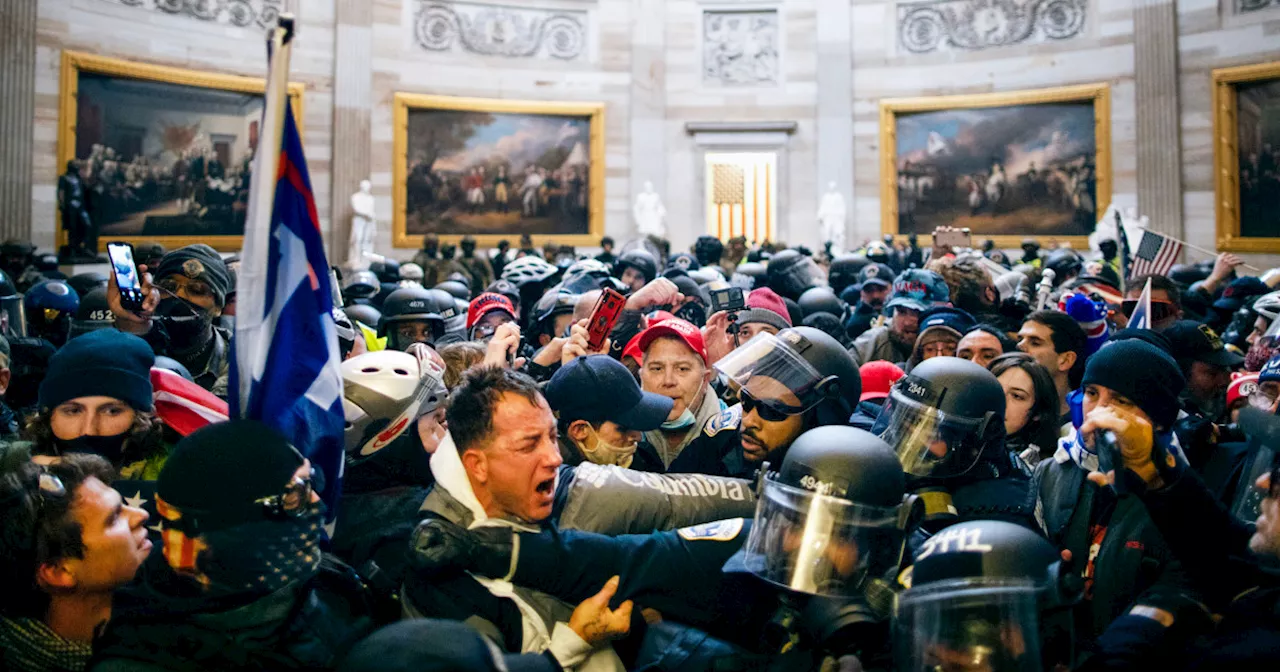A former federal prosecutor reflects on the pardons granted to over 1,500 individuals involved in the January 6th Capitol riot, highlighting the bravery of the police officers who defended the Capitol and the deep disconnect between the pardons and the gravity of the offenses committed against them.
As a former federal prosecutor who, together with dozens of dedicated colleagues, investigated and prosecuted many cases arising from the attack on the Capitol, I have been asked frequently what I think about the pardons of more than 1,500 rioters. I think of the thousands of Americans who were horrified by Jan. 6 and provided critical tips.
I think of the FBI agents across the country who not only worked scores of cases but also carried out arrests of defendants known to possess weapons and to use them willingly against law enforcement. Some of these defendants threatened arresting agents with firearms and, in one extreme case, a defendant plotted to kill the agents, but the FBI bravely did its job anyhow. I think about the tireless leadership at the U.S. Attorney’s Office that skillfully guided the largest criminal investigation in the U.S. Department of Justice’s history even while presiding over an impressive drop in local violent crime. More than anything, however, I think of the police officers who defended the Capitol on Jan. 6. Under the Constitution’s broad grant of discretionary power, President Donald Trump could effortlessly pardon all the crimes committed against these officers, and he did so with a breezy one-page proclamation. But he never could have looked any of the officer victims in the eye and justified what he was doing. That terrible disconnect crystallizes the abhorrence of these pardons. Like all my colleagues, I watched hundreds of hours of video showing, from all angles, what the police experienced on Jan. 6. The Metropolitan Police officers, who served alongside the Capitol Police, wore body cameras, and that footage provided the most visceral insights of all. It allowed me to imagine standing in the officers’ shoes as rioters bashed them from the front and back with flagpoles; assaulted them with mace and bear spray; threw pieces of scaffolding and other hard projectiles at them; called them traitors and hurled racial slurs at them; and on and on. It’s no wonder that even officers who worked on homicide squads consistently described Jan. 6 as the single worst day in uniform that they had ever experienced. More influential than viewing any one horrific incident was the experience of watching a single officer’s body-worn camera footage straight through. That exercise showed what it was like to be under siege from the rioters for hours. To douse out your pepper-sprayed eyes and return to the line. To fear that any of the hundreds of angry rioters in front of you would pull out a gun, and to nevertheless stay on the line. To push hundreds of rioters out of one door only to discover that another door has been breached. The tirelessness, bravery and restraint that these officers showed is beyond anything I can put into words. Despite all that they endured, the officers, as a group, were remarkably dispassionate witnesses. They were willing to testify — and to thereby relive, repeatedly, their trauma — in service of what they understood to be a necessary process. Yet they were not out for vengeance. They took a remarkably hands-off approach to the prosecutions that, in a very real sense, were being pursued in their names. Throughout the prosecutions, however, I was often reminded of what the outside world’s reaction to the riot meant to the officers. Twice I had an experience in which a Capitol Police officer told me that he or she had been assaulted by an as-yet-undiscovered perpetrator. Both crimes were vicious and cowardly: In each, the assailant had descended on a single officer already under attack, assaulted the lone officer with mace, and then disappeared back into the crowd. My colleagues and I eventually identified both perpetrators. One was convicted at trial and was serving his prison sentence until receiving Trump’s get-out-of-jail free card. The other — who nearly avoided detection altogether by wearing a ski mask and goggles on Jan. 6 — was awaiting trial until this week’s reprieve. Neither of the two officer victims ever asked me or anyone else to track down the person who brutally attacked them. But they were appreciative that we did. It showed them that somebody cared about what they had done to protect our democracy, and somebody cared about the price they paid in doing so. It’s a shame that these officers received the opposite message this week. One can easily imagine Trump sitting at his desk, signing the proclamation freeing every convicted and imprisoned rioter and terminating every pending case, and then moving on to the next piece of paper. But one cannot imagine anyone with an ounce of humanity looking the police officer victims in the eye and telling them that these violent assaults were OK. One cannot imagine anyone looking these officer victims in the eye and defending these pardons. It would be impossible to do s
Capitol Riot Jan 6Th Pardons Police Officers U.S. Department Of Justice Federal Prosecutors
United States Latest News, United States Headlines
Similar News:You can also read news stories similar to this one that we have collected from other news sources.
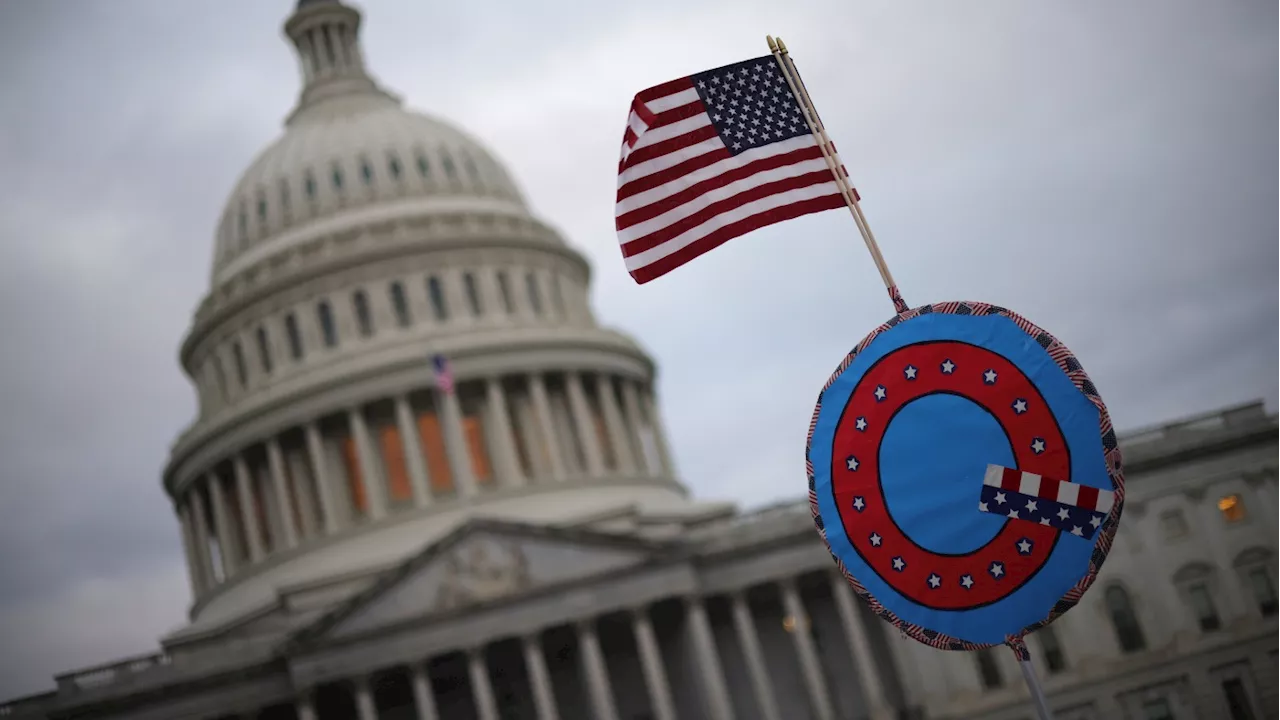 QAnon's Influence on the January 6th Capitol Riot Continues to Be FeltWhile less prominent than in 2021, QAnon's influence on the January 6th Capitol riot continues to be felt. The online conspiracy theory, which claims that Donald Trump is fighting a secret battle against a cabal of elites, motivated many rioters. The article highlights the story of Douglas Jensen, who wore a QAnon shirt during the attack and told the FBI he wanted to 'get Q's attention.' Although most rioters were inspired by Trump's calls to be at the Capitol, many, like Jensen, also cited QAnon. The article also notes that the online extremist community has continued to be subtly courted by Trump and his allies.
QAnon's Influence on the January 6th Capitol Riot Continues to Be FeltWhile less prominent than in 2021, QAnon's influence on the January 6th Capitol riot continues to be felt. The online conspiracy theory, which claims that Donald Trump is fighting a secret battle against a cabal of elites, motivated many rioters. The article highlights the story of Douglas Jensen, who wore a QAnon shirt during the attack and told the FBI he wanted to 'get Q's attention.' Although most rioters were inspired by Trump's calls to be at the Capitol, many, like Jensen, also cited QAnon. The article also notes that the online extremist community has continued to be subtly courted by Trump and his allies.
Read more »
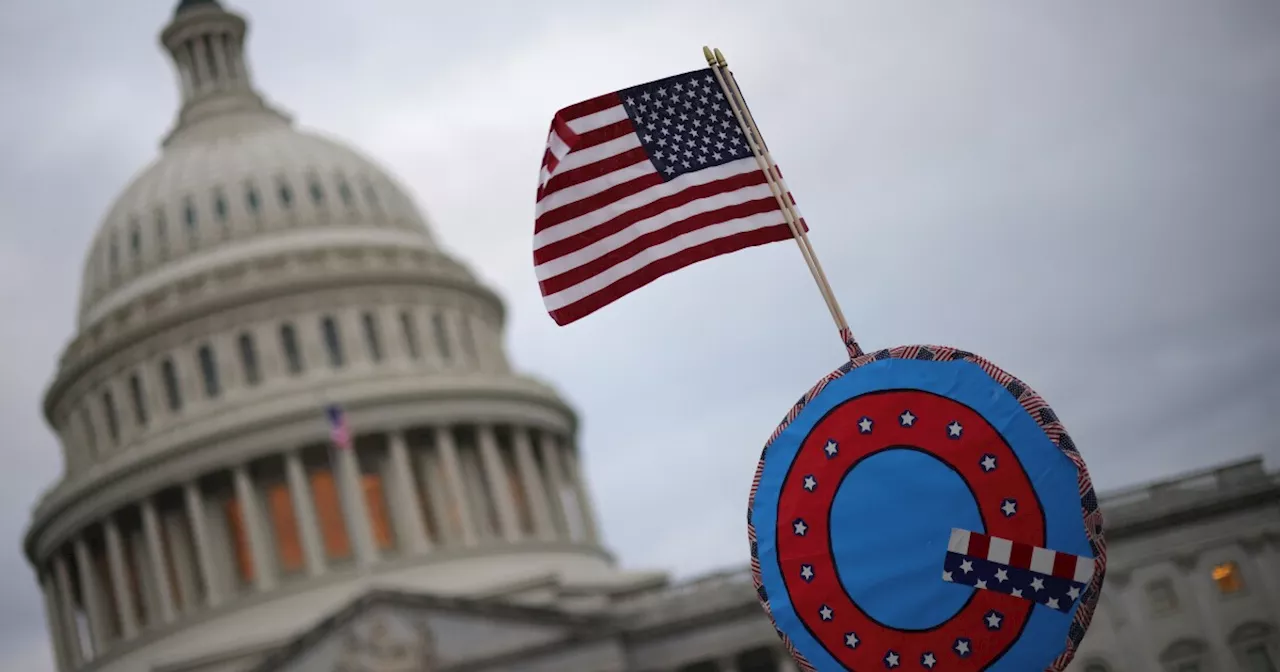 QAnon's Influence on the January 6th Capitol RiotThis article examines the role of the QAnon conspiracy theory in motivating rioters during the January 6th attack on the U.S. Capitol. It highlights the testimony of individuals like Douglas Jensen, who explicitly stated their desire for 'Q to get the attention' by wearing pro-QAnon attire. The article also discusses the broader context of QAnon's influence, noting its cultivation by Trump and his allies.
QAnon's Influence on the January 6th Capitol RiotThis article examines the role of the QAnon conspiracy theory in motivating rioters during the January 6th attack on the U.S. Capitol. It highlights the testimony of individuals like Douglas Jensen, who explicitly stated their desire for 'Q to get the attention' by wearing pro-QAnon attire. The article also discusses the broader context of QAnon's influence, noting its cultivation by Trump and his allies.
Read more »
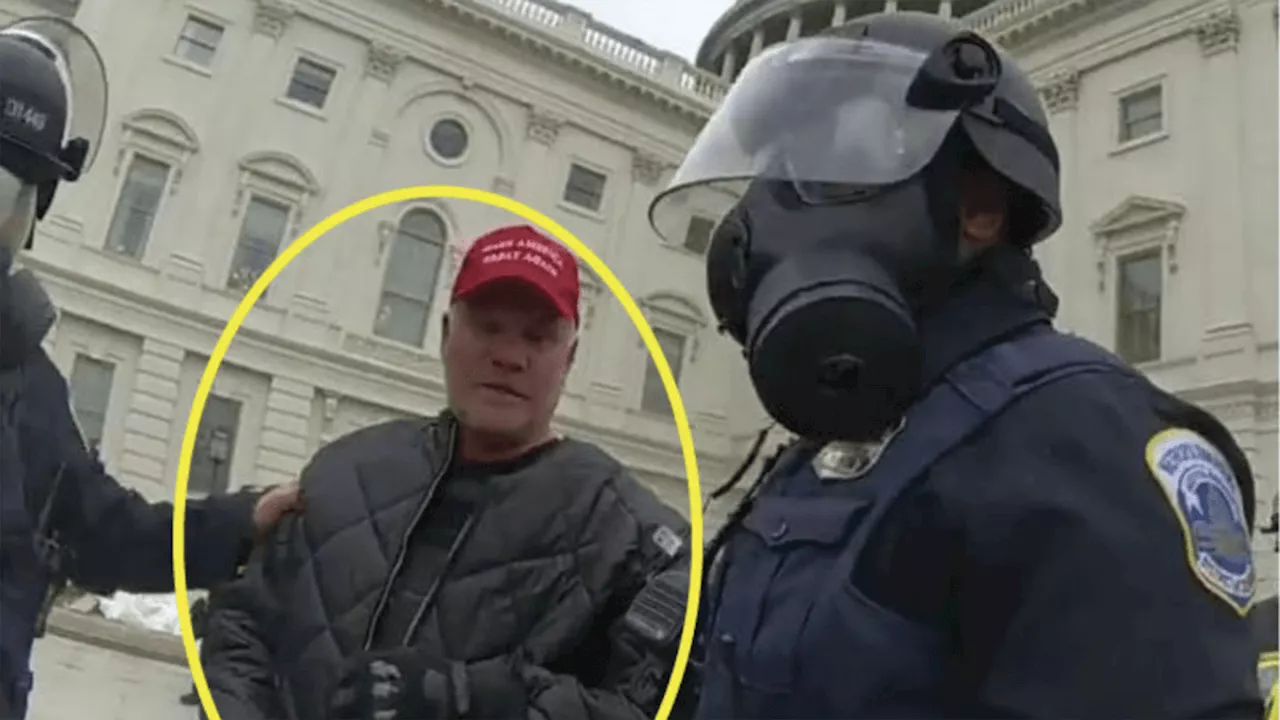 Colleyville Man Arrested for Assaulting Officers During January 6th Capitol RiotA Colleyville man, Daniel Dustin Deneui, was arrested for assaulting law enforcement officers during the January 6th Capitol riot. He faces multiple charges, including obstruction of justice and carrying a dangerous weapon.
Colleyville Man Arrested for Assaulting Officers During January 6th Capitol RiotA Colleyville man, Daniel Dustin Deneui, was arrested for assaulting law enforcement officers during the January 6th Capitol riot. He faces multiple charges, including obstruction of justice and carrying a dangerous weapon.
Read more »
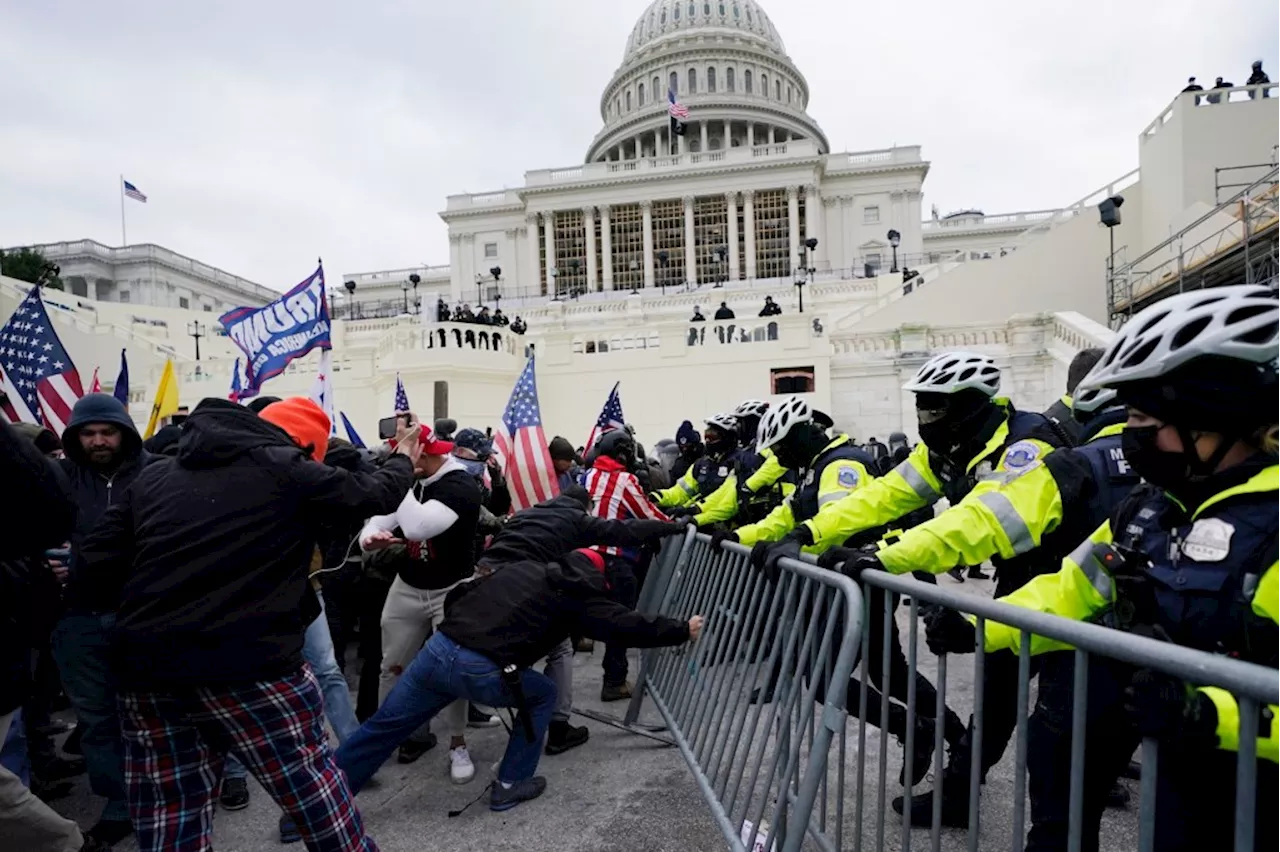 January 6th Anniversary: Capitol Police Officer Seeks AcknowledgmentA former Capitol Police officer expresses his desire for a plaque honoring officers who defended the Capitol on January 6, 2021, amid concerns about the event being forgotten.
January 6th Anniversary: Capitol Police Officer Seeks AcknowledgmentA former Capitol Police officer expresses his desire for a plaque honoring officers who defended the Capitol on January 6, 2021, amid concerns about the event being forgotten.
Read more »
 Capitol Repairs Complete, But January 6th Insurrection Remains UnmarkedDespite physical repairs to the Capitol building, the January 6th, 2021 insurrection remains uncommemorated, raising concerns about a potential rewriting of history.
Capitol Repairs Complete, But January 6th Insurrection Remains UnmarkedDespite physical repairs to the Capitol building, the January 6th, 2021 insurrection remains uncommemorated, raising concerns about a potential rewriting of history.
Read more »
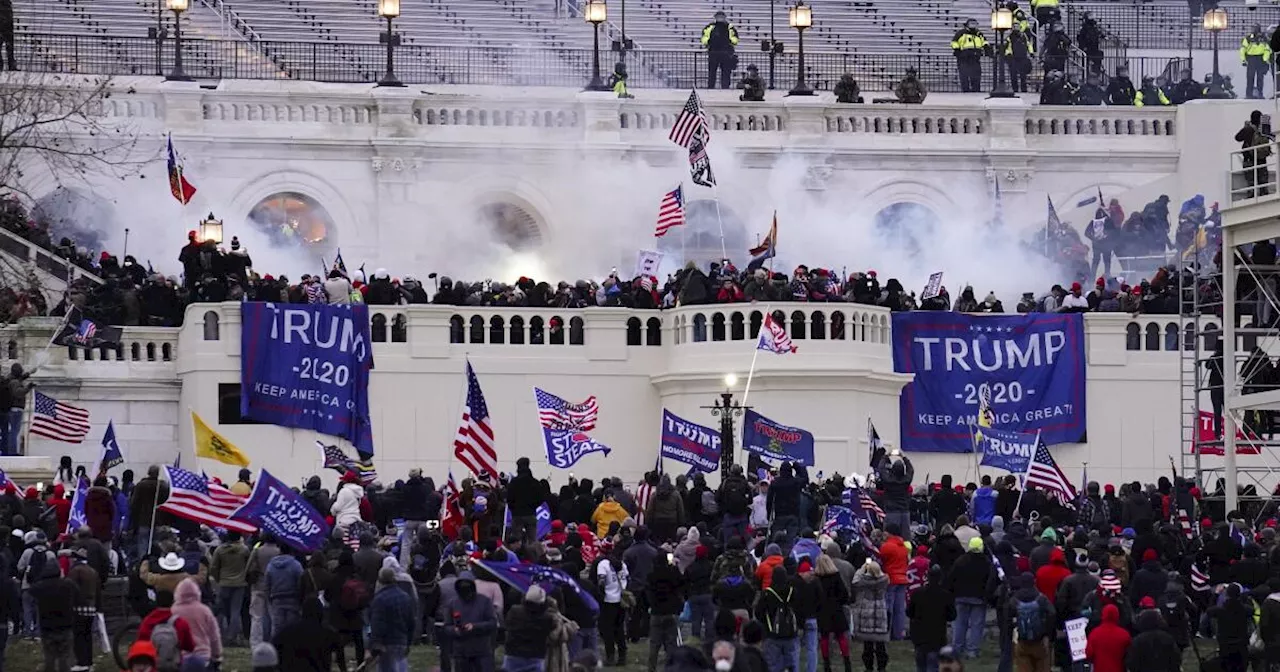 U.S. Capitol Erases Memories of January 6th InsurrectionThe U.S. Capitol is actively erasing reminders of the January 6th, 2021 insurrection. Repairs have concealed scars, broken windows and doors have been replaced, and there are no memorials commemorating the event. Many Republicans downplay the attack, echoing former President Donald Trump's false claims that it was overblown and the rioters victims. This erasure of history raises concerns about accountability and the future of American democracy.
U.S. Capitol Erases Memories of January 6th InsurrectionThe U.S. Capitol is actively erasing reminders of the January 6th, 2021 insurrection. Repairs have concealed scars, broken windows and doors have been replaced, and there are no memorials commemorating the event. Many Republicans downplay the attack, echoing former President Donald Trump's false claims that it was overblown and the rioters victims. This erasure of history raises concerns about accountability and the future of American democracy.
Read more »
